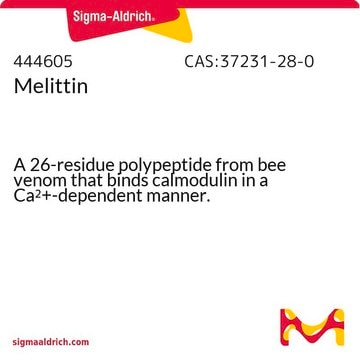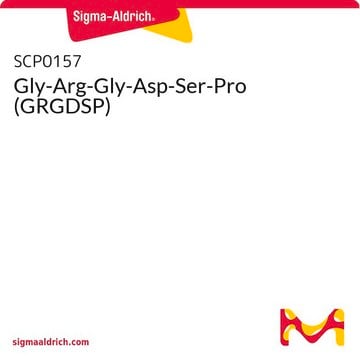Recommended Products
form
film
quality
low endotoxin
impurities
≤1 EU/mg endotoxin
storage temp.
−20°C
General description
The nanoHA products are small-molecular weight hyaluronic acid oligomers prepared by chemoenzymatic synthesis using immobilized enzymes. The name of each nanoHA indicates the number of monosaccharide units in the oligomer. The reducing end contains N-acetyl-D-glucosamine.
Application
NanoHA has been used in a study to assess the nanomechanical properties of electrospun composite scaffolds. It has also been used in a study to investigate the influence of crystallite size of nanophased hydroxyapatite on fibronectin and osteonectin adsorption and on osteoblast adhesion and morphology.
Other Notes
nanoHA7 is a heptasaccharide containing three hyaluronan disaccharide subunits (GlcNAcβ4GlcAβ3GlcNAcβ4GlcAβ3GlcNAcβ4GlcAβ3GlcNAcβ4).
To gain a comprehensive understanding of our extensive range of Oligosaccharides for your research, we encourage you to visit our Carbohydrates Category page.
Physical form
Supplied lyophilized as the ammonium and/or sodium salt.
Analysis Note
Sold on the basis of carbohydrate as determined by carbazole assay.
Legal Information
nanoHA is a trademark of Hyalose LLC
Storage Class Code
11 - Combustible Solids
WGK
WGK 3
Flash Point(F)
Not applicable
Flash Point(C)
Not applicable
Certificates of Analysis (COA)
Search for Certificates of Analysis (COA) by entering the products Lot/Batch Number. Lot and Batch Numbers can be found on a product’s label following the words ‘Lot’ or ‘Batch’.
Already Own This Product?
Find documentation for the products that you have recently purchased in the Document Library.
Parul Tyagi et al.
Journal of nanoscience and nanotechnology, 9(8), 4839-4845 (2009-11-26)
Fibrous nanocomposite scaffolds were electrospun from dispersions of hydroxyapatite nanoparticles (nanoHA) in polycaprolactone (PCL) with varying nanoHA contents (from 0% to 50% by weight). Such scaffolds were produced to mimic the nano-features of the extracellular matrix (ECM) for natural bone
N Ribeiro et al.
Journal of colloid and interface science, 351(2), 398-406 (2010-09-03)
The characteristic topographical features (crystallite dimensions, surface morphology and roughness) of bioceramics may influence the adsorption of proteins relevant to bone regeneration. This work aims at analyzing the influence of two distinct nanophased hydroxyapatite (HA) ceramics, HA725 and HA1000 on
Staphylococcus aureus and Staphylococcus epidermidis adhesion to nanohydroxyapatite in the presence of model proteins
Ribeiro, M., et al.
Bio-medical materials and engineering, 7, 045010-045010 (2012)
Our team of scientists has experience in all areas of research including Life Science, Material Science, Chemical Synthesis, Chromatography, Analytical and many others.
Contact Technical Service






